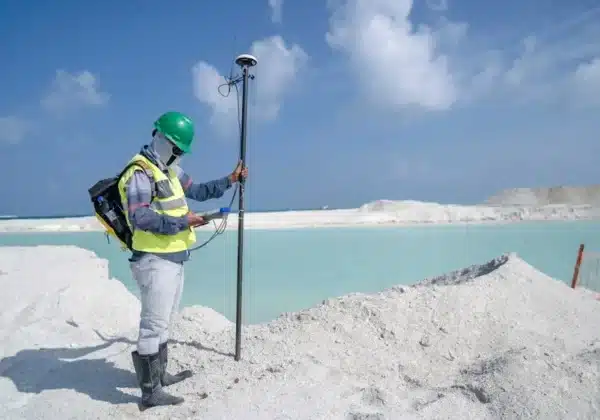Embarking on a boundary survey for your fence can seem like a daunting task, but it’s a crucial step in safeguarding your property rights. Whether you’re a seasoned DIY enthusiast or a homeowner delving into boundary matters for the first time, understanding the necessary steps is key. In this guide, we’ll walk you through ten essential steps to help you conduct a successful boundary survey for your fence.
1. Understanding the Importance of a Boundary Survey
Before you begin, it’s important to understand why a boundary survey is crucial. It helps prevent disputes with neighbors and ensures that your fence is erected on your land, safeguarding your property rights. With boundary disputes becoming more common, especially in areas where property lines are blurry, a clear and accurate survey can act as your legal shield. It provides a formal depiction of your boundary lines and helps avoid the pitfalls of assuming where your property begins and ends Boundary Surveys Guide.
Moreover, undertaking a boundary survey is vital for future property planning. If you’re eyeing a project that could alter the land or involve adding structures, understanding the precise extents of your property becomes paramount. By having this document, not only do you protect yourself from potential legal challenges, but you also lay the groundwork for stress-free dealings with potential buyers or officials in cases of selling or legal scrutiny.
2. Gathering Necessary Documents
Collecting the right documents is an essential step, and it begins with gathering your property deeds, which detail the legal boundaries and extent of your land. Previous surveys are invaluable as they may shed light on historical boundary delineations, potentially saving time and effort during your current survey efforts. Plat maps will give you a bird’s eye view of your property and its relation to surrounding plots.
These documents collectively provide a framework for understanding your property’s dimensions. They assist in cross-referencing during the survey process, ensuring that your property lines are established precisely Boundary Survey in Utah. A thorough review of these papers beforehand can clarify ambiguities in boundary definitions and streamline the surveying process. If any document appears outdated or inconsistent, it may be prudent to seek updated records from local authorities.
3. Consulting Local Zoning Laws and Regulations
Familiarizing yourself with local zoning laws is not just about knowing where your fence can go; it’s about understanding the bigger picture of land use in your community. Zoning laws dictate how land within certain areas can be used, affecting not just fences but also other structures and modifications you might consider in the future.
By complying with these regulations, you navigate smoother project approvals and avoid costly legal headaches later on. Ensure to check if there are specific permits you need to acquire or any restrictions on fence heights and materials. Keeping abreast of your local zoning regulations can prevent delays and ensure your fence aligns with both your property values and community standards.
4. Hiring a Professional Surveyor
While doing it yourself may seem appealing, hiring a professional surveyor provides unmatched accuracy and reliability. Surveyors bring a wealth of knowledge and experience, making them capable of performing intricate measurements that adhere to legal standards. They’re equipped with advanced tools and technologies, such as GPS and laser measuring devices, to ensure precise boundary delineation.
Consider this an investment in your property’s future value and integrity. When disputes arise, the surveyor’s report serves as a concrete reference that legal bodies often recognize. In Utah, experts at Ludlow Engineers offer reliable and thorough surveying services tailored to both residential and commercial needs. Remember, a credible surveyor not only measures land; they also provide invaluable insights into property features and the best way to approach them when installing your fence.
5. Performing a Preliminary Assessment
Embarking on a preliminary assessment of your property is akin to setting the stage for the formal survey process. As you walk along your property’s edge, be keen on natural markers, existing structures, or abrupt terrain changes that could indicate potential boundary lines. It’s also an opportunity to note any visible discrepancies between what’s on the ground and what’s reflected in your documented boundary descriptions.
Think of this step as laying the groundwork for the professional surveyor. Highlight any marked deviations or potential issues for them to consider during their assessment. This early reconnaissance not only aids your understanding but ensures the professional surveyor’s work is streamlined and all anomalies accounted for.
6. Marking Property Corners
With the initial information in hand, marking property corners is the next step. This phase requires accuracy, and using physical indicators like stakes or flags helps solidify your findings from the documentation and preliminary assessment. Begin by referencing your deed and survey details to identify key corner points that define your property’s shape.
It’s critical to ensure these marks are visible and secure, particularly if environmental conditions could disrupt them. This visual interpretation of your property’s boundaries serves as a roadmap for both the surveyor and yourself as you advance toward strategic tasks such as fence installation.
7. Setting Up Temporary Fencing
Setting up temporary fencing offers you a visualization tool ahead of the final fence construction. It’s a strategy that allows you to align your planned fence placement with the marked boundary corners effectively. This temporary setup can be as simple as using wire or strings, which give you flexibility in making adjustments.
Consider it a dry run for your actual installation. The visual guide can help you assess the aesthetics and functionality of your planned fence location, ensuring it meets practical needs while respecting boundary constraints. Furthermore, it’s an opportunity to confirm alignment with any potential landscape features you wish to preserve or highlight through your fence design.
8. Checking for Natural or Existing Boundaries
When inspecting for natural boundaries, look for elements like trees, rock formations, or water bodies that might historically delineate property lines. While official surveys are the ideal guide, these features often complement and enhance understanding of your property’s border landscape.
If there’s already fencing in place or clear markers left by past owners, consider their position relative to your marked corners and survey data. While they might align with your findings, remember such markers should only supplement—not replace—the precision of your boundary survey. It’s also wise to account for any shifts over time due to environmental factors or construction changes.
9. Communicating with Neighbors
Open communication with neighbors is pivotal when planning a boundary survey for your fence. It’s courteous and wise to discuss your intentions, share survey findings, and address any concerns upfront, as this dialogue can preemptively resolve potential disputes that might arise during fence construction.
This cooperative approach not only fosters good neighborly relationships but can also provide additional insights into boundary history from their viewpoint. Engaging neighbors might also lead to shared interests, such as joint fence projects, ultimately aligning everyone’s goals while reinforcing clarity and harmony amongst property lines.
10. Reviewing and Double-Checking Measurements
A meticulous review of your survey measurements is the concluding yet critical step in your boundary survey process. Double-check each corner and ensure they align with the records and physical environment. Precision here prevents setbacks during fence installation and reduces the possibility of disputes in the future Precision of Boundary Surveys.
When ensuring accuracy, consider having a final walk-through with your surveyor if necessary. Their professional eye helps reinforce the confidence in your derived measurements. Armed with verified data, you can proceed with erecting your fence knowing it stands on a solid legal and physical foundation, without infringing on neighboring properties.




